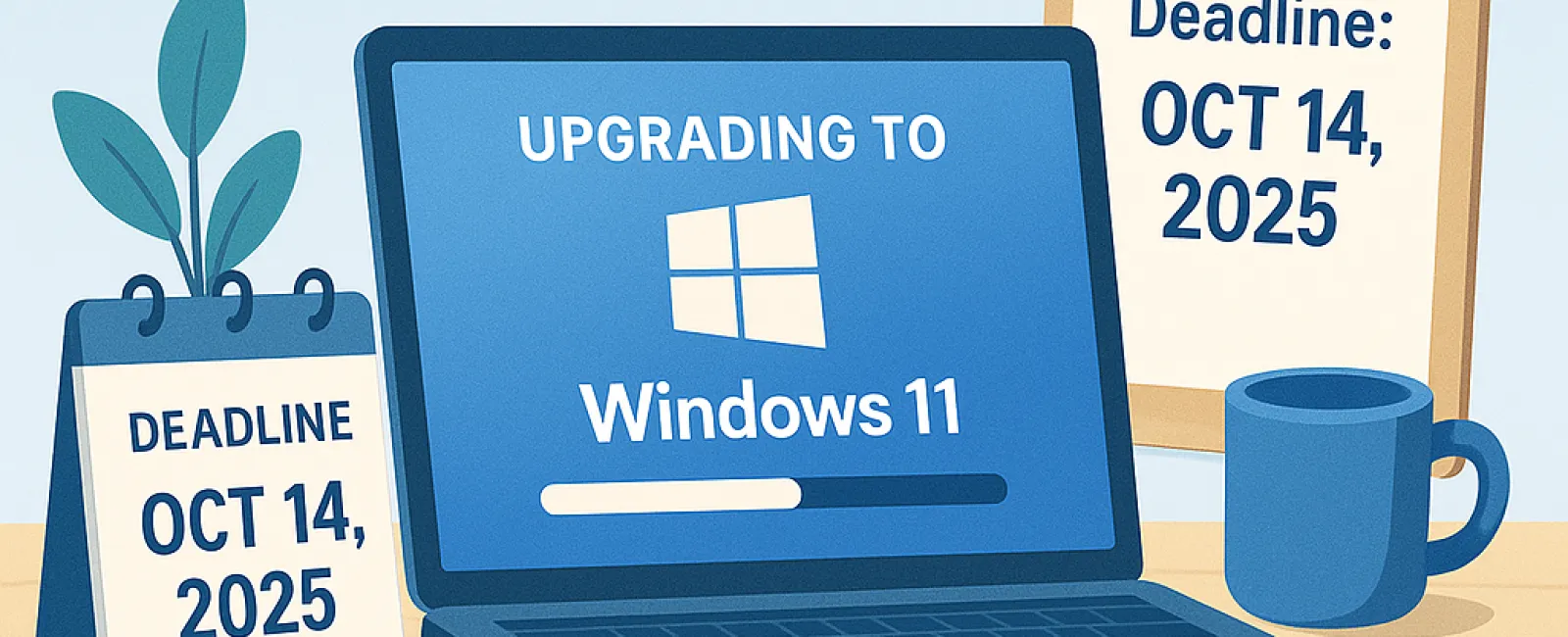June 23, 2025
If you're still using Windows 10 on your business computers, here's the bottom line: time is running out. On October 14, 2025, Microsoft will officially stop supporting Windows 10. This means no more security updates, bug fixes, or technical help. But the real issue for business owners isn't just the eventual need to upgrade; it's about what delaying that upgrade could cost you right now.
"We'll Deal With It Later" Is An Expensive Strategy
We understand that upgrading every device in your business isn't a fun or cheap task. It's tempting to put it off—until something breaks. But procrastination has real costs:
1. You're Operating Without A Safety Net
After Microsoft ends Windows 10 updates, any new security risks fall entirely on you. Hackers target outdated systems because they're easy to exploit. It's like locking your front door but leaving the windows open. One security breach could cost thousands or even threaten your entire business.
2. Software And Hardware Compatibility Issues
Many business applications—like accounting software, CRMs, and specialized platforms—are already dropping support for Windows 10. Imagine your systems failing during an important project or client presentation—what would that cost you? It's not just software; new printers, peripherals, and security devices may also stop working properly with an outdated operating system.
3. Lost Productivity
Older systems run slower, crash more often, and frustrate your employees. Even small delays add up, reducing efficiency, lowering morale, and hurting your competitiveness. If each employee loses 10 to 15 minutes a day to tech problems, how much productivity is lost over a month?
4. Emergency Upgrades Are Always More Expensive
Waiting until a system crashes or your team can't work leads to panic spending: emergency hardware orders, rush IT service fees, and business disruptions while devices are replaced. A bit of planning now can save you from expensive last-minute chaos.
5. You're Risking Compliance Violations
If your business handles sensitive data or must comply with regulations like HIPAA or PCI-DSS, running unsupported software could lead to fines or legal trouble. Many regulations require current security measures, and Windows 10 won't meet those requirements after support ends.
What Smart Business Owners Are Doing Now
They're getting ahead of the deadline by not only upgrading devices but also using this transition to:
- Identify which devices need replacing
- Simplify tools and software
- Strengthen cybersecurity
- Plan IT budgets more effectively for 2025
How To Make The Transition Smooth
Here's what we suggest:
- Run a compatibility check to see which machines can upgrade to Windows 11 and which need replacement
- Review your applications to ensure they'll work on Windows 11 or newer systems
- Budget for new hardware now to avoid supply chain delays
- Work with an IT provider who can manage the entire upgrade process with minimal downtime and no surprises
Don't Wait Until October To Panic
Delaying the upgrade will cost you more—in money, stress, and missed opportunities. We help small businesses make this upgrade smartly: planned, seamless, and optimized for future growth.
Click here or call us at 408-335-0353 to book your Discovery Call and we'll help you identify what
needs upgrading, what can stay and how to build a transition plan that won't
disrupt your business before the deadline.





